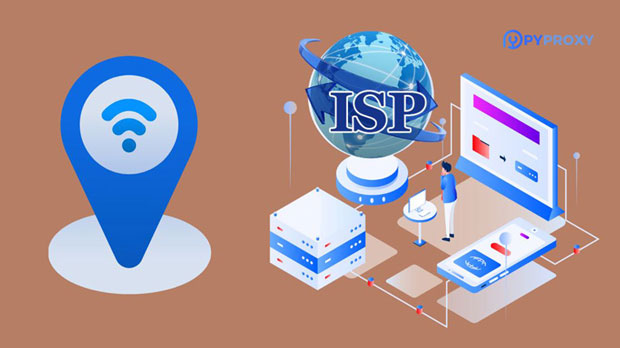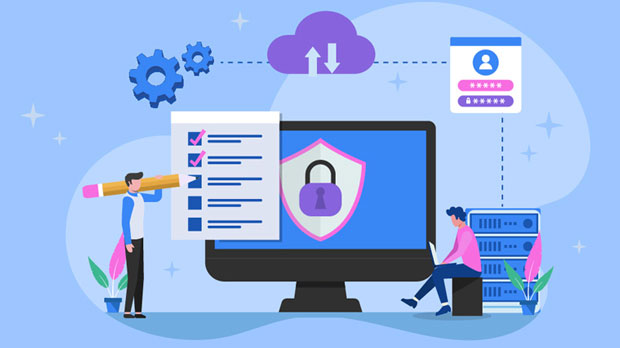What percentage of businesses and individual users use Rotary IP Proxy?
Rotating ip proxies have become an essential tool for both businesses and individual users looking to maintain privacy, enhance security, and streamline online activities. The use of rotating IP proxies involves automatically switching between different IP addresses, which helps mask the true identity of users and evade restrictions. The demand for these proxies varies between business and individual users, with businesses often utilizing them for more complex, high-volume tasks, while individuals may use them for personal privacy or bypassing geo-restrictions. In this article, we will explore how rotating IP proxies are used by both entities, analyzing the usage proportions and the factors influencing these patterns. The Growing Demand for Rotating IP ProxiesIn recent years, the demand for rotating IP proxies has significantly increased across both business and personal sectors. This surge can be attributed to the growing concerns about online privacy and the need to safeguard sensitive data. Rotating IP proxies enable users to access the internet with multiple IP addresses, making it harder for websites and services to track or block their activities. For businesses, the use of rotating IP proxies is typically tied to the need for scalable, efficient, and secure operations. Whether for web scraping, data mining, or competitive analysis, businesses rely heavily on the anonymity and versatility these proxies provide. On the other hand, individual users are driven by the desire for more control over their online presence and are often looking for ways to access restricted content or avoid geographical limitations on certain services.Business Usage: A Larger Share of the MarketWhen it comes to rotating IP proxies, businesses represent a larger portion of the market. The enterprise sector often requires proxies in large quantities to facilitate high-demand tasks, such as automated web scraping, SEO optimization, ad verification, and market research. These tasks benefit from the ability to rotate IP addresses frequently, as it reduces the risk of getting blocked or detected by websites. Rotating IP proxies allow businesses to maintain multiple simultaneous connections without triggering the restrictions commonly implemented by websites, which are designed to limit actions based on specific IP addresses. Companies in industries such as e-commerce, travel, real estate, and technology are among the heaviest users, employing proxies to gather competitive data, monitor online prices, or conduct large-scale marketing campaigns.Moreover, businesses may require rotating IP proxies for customer support and fraud prevention. Many industries, especially those in the financial and security sectors, use proxies to mask the identity of their users during transactions, thus safeguarding both customer and company information from potential threats.Individual Usage: Privacy and Bypassing RestrictionsWhile businesses dominate the use of rotating IP proxies, the individual market is also growing. Personal users typically turn to proxies for a variety of reasons, such as enhancing privacy, protecting personal data, and bypassing regional restrictions. For individuals, rotating IP proxies provide the ability to maintain anonymity while browsing the internet. This is particularly important in countries where surveillance is common, or where individuals want to safeguard their personal information from data collection efforts by websites and advertisers.The second major reason individuals use rotating IP proxies is to bypass geographical restrictions. Many online services, such as video streaming platforms, impose content restrictions based on the user's geographical location. By rotating IP addresses, individuals can appear to be located in different countries, gaining access to content that would otherwise be blocked in their region. This ability to bypass geo-blocking is one of the most common reasons for individual use of rotating IP proxies.Additionally, rotating IP proxies are often used by those who are interested in online gaming or testing websites. Gamers may use proxies to access region-specific content, while website testers can rotate IPs to simulate traffic from various locations during quality assurance processes.Key Differences in Usage PatternsThe primary difference in how businesses and individuals use rotating IP proxies lies in the scale and frequency of usage. Businesses tend to require a larger volume of IP addresses to perform data-intensive tasks. They also use proxies in automated systems, where constant and high-frequency IP switching is necessary. Individuals, on the other hand, typically use proxies for smaller-scale operations. Their use tends to be more manual or limited to specific activities such as browsing or accessing geo-restricted content.Businesses also have stricter security protocols and higher expectations for reliability, making them more likely to invest in premium proxy services. Individuals, in contrast, often seek cost-effective solutions and are less concerned with high levels of scalability. The complexity of the tasks also differs between the two. While businesses may rely on rotating IP proxies for sophisticated web scraping algorithms or large-scale data collection, individuals generally use proxies for simpler, privacy-focused activities.Factors Influencing the Usage ProportionsThe varying proportions of rotating ip proxy usage in businesses and individual users can be attributed to several key factors. For businesses, the primary driver is the need for automation, efficiency, and large-scale operations. Proxies are an essential tool for conducting business at scale, especially in industries that depend heavily on digital data. The costs associated with using rotating IP proxies also influence the usage distribution. Businesses are more likely to invest in high-volume proxy solutions due to their larger budgets and more complex needs. Conversely, individual users may seek out less expensive options for more limited purposes, such as personal privacy or bypassing geo-restrictions.The Future of Rotating IP ProxiesAs the online landscape continues to evolve, it is likely that both business and individual demand for rotating IP proxies will increase. For businesses, the need for security, automation, and data analysis will drive the continued use of proxies, with more sophisticated algorithms requiring enhanced proxy management tools. For individuals, the growing concerns about online privacy and the increasing availability of region-specific content will continue to fuel the demand for proxy services.It is important to note that as more users, both businesses and individuals, rely on rotating IP proxies, websites and service providers are also improving their detection mechanisms. As a result, proxy technology is continuously advancing to overcome new challenges, making it an ongoing arms race between proxy providers and those who aim to prevent their usage.In conclusion, rotating IP proxies are a valuable tool for both businesses and individual users, with distinct usage patterns and motivations driving the demand in each group. Businesses make up a larger share of the market due to the need for large-scale operations and automation, while individual users turn to proxies primarily for privacy and geo-restriction bypassing. The continued evolution of the internet, along with increasing concerns about privacy and security, will likely continue to shape the demand for these essential tools in the future.
2025-02-13
























































